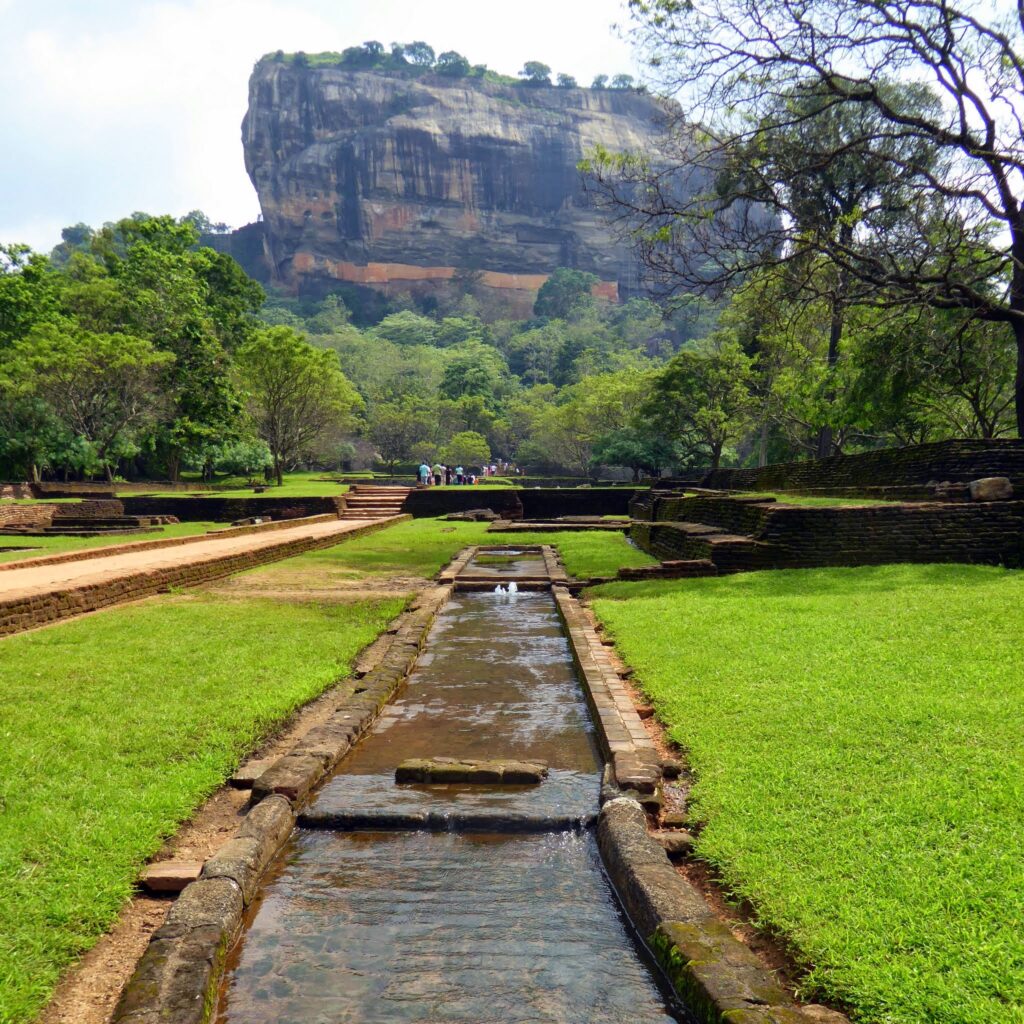Discover the Majestic Sigiriya Rock Fortress: A UNESCO World Heritage Gem in Sri Lanka
Sigiriya Rock Fortress, often referred to as the “Lion’s Rock,” is an awe-inspiring ancient marvel located in the heart of Sri Lanka. Recognized as a UNESCO World Heritage Site, Sigiriya is one of the most iconic and culturally significant landmarks in Sri Lanka, offering a unique blend of history, architecture, and breathtaking natural beauty.


Sigiriya Rock Fortress is renowned for its remarkable historical and architectural heritage. Built during the reign of King Kasyapa (477–495 CE), this ancient citadel stands atop a massive, 200-meter-high rock formation that rises dramatically from the surrounding plains. The fortress was designed as a royal residence and a fortified palace, showcasing the ingenuity and artistry of ancient Sri Lankan civilization.
The site’s historical significance is deeply intertwined with the legend of King Kasyapa, who chose Sigiriya as his stronghold after a power struggle. The fortress’s design and layout reflect Kasyapa’s ambition to create a visually stunning and strategically advantageous palace, complete with sophisticated hydraulic systems and elaborate frescoes.


Sigiriya Rock Fortress is celebrated for its stunning architecture and intricate artistic elements. The fortress complex includes:

The Lion’s Gate: The entrance to the fortress is marked by the remains of a colossal lion’s paws carved into the rock, from which the site derives its name. The gateway leads to a series of staircases and walkways that ascend to the summit.

The Mirror Wall: A marvel of ancient engineering, the Mirror Wall is an intricately polished surface that once gleamed in the sunlight. It features inscriptions and poems left by ancient visitors, providing a glimpse into the literary culture of the time.

The Frescoes: Sigiriya is renowned for its exquisite frescoes that adorn the rock face. These vibrant murals depict celestial maidens and courtly scenes, offering a vivid portrayal of the artistic sophistication of the era. The frescoes are among the best-preserved examples of ancient Sri Lankan art.

The Water Gardens: The base of Sigiriya features an impressive network of water gardens, complete with fountains, pools, and intricate geometric patterns. These gardens exemplify the advanced hydraulic engineering of the period and offer a serene and picturesque setting.
Climbing to the summit of Sigiriya Rock Fortress is an exhilarating experience that rewards visitors with panoramic views of the surrounding landscape. The ascent involves navigating a series of staircases, including a challenging climb up the steep rock face. Along the way, visitors pass through the Lion’s Gate and the Mirror Wall, and can enjoy stunning views of the landscaped gardens below.
At the summit, the remains of the royal palace and the stunning vistas provide a breathtaking experience. The fortress offers spectacular views of the lush greenery and the surrounding countryside, making it a perfect spot for photography and contemplation.


Enhance your visit to Sigiriya with a tour of nearby attractions:





Sigiriya Rock Fortress offers an unparalleled blend of historical intrigue, architectural splendor, and natural beauty. Whether you’re a history enthusiast, an architecture aficionado, or a nature lover, Sigiriya provides a captivating experience that will leave you in awe of Sri Lanka’s rich cultural heritage and natural wonders.
Embark on a journey to Sigiriya and immerse yourself in the grandeur of this ancient fortress, exploring the remnants of a bygone era and enjoying the breathtaking vistas of one of Sri Lanka’s most cherished landmarks.



This is the official website of the Ministry of Tourism, Republic of Indonesia. The contents listed on this website are intended for informational purposes rather than commercial. Any displayed sale is meant as a token of partnership and will always redirect you to our partners’ sites.